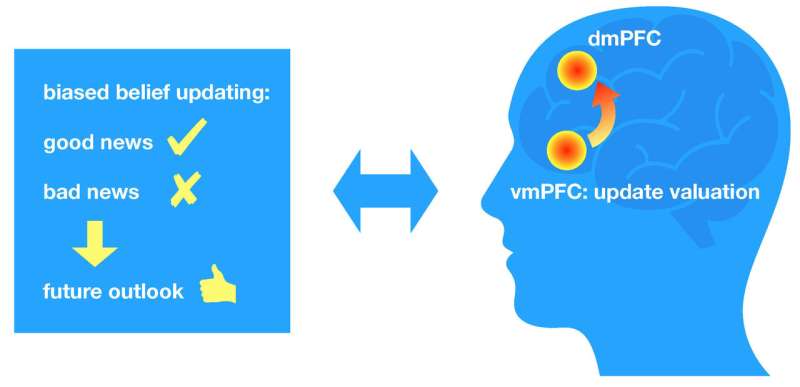Credit: Bojana Kuzmanovic
People's motivation to cling to desirable notions about future outlooks results from interactions between prefrontal cortex regions, according to a human neuroimaging study published in JNeurosci.
Bojana Kuzmanovic and colleagues uncovered circuits in the brain that support belief updating by asking participants to estimate their own and a peer's likelihood of experiencing an adverse life event, such as receiving a cancer diagnosis, and then presenting them with the actual federal statistics. Participants then reevaluated their personal risk in light of this new information.
The researchers found that the difference between the two estimates was greater when participants initially overestimated their risk of the adverse event, demonstrating the well-known optimism bias. An analysis of brain activity and the underlying circuitry revealed that this phenomenon depends on the influence of the brain's valuation system on reasoning processes.
The proposed circuit involves the dorsolateral, ventromedial, and dorsomedial prefrontal cortex, which together bias integration of new information to support a preferred conclusion.
More information: Influence of vmPFC on dmPFC Predicts Valence-Guided Belief Formation, JNeurosci (2018). DOI: 10.1523/JNEUROSCI.0266-18.2018
Journal information: Journal of Neuroscience
Provided by Society for Neuroscience
























